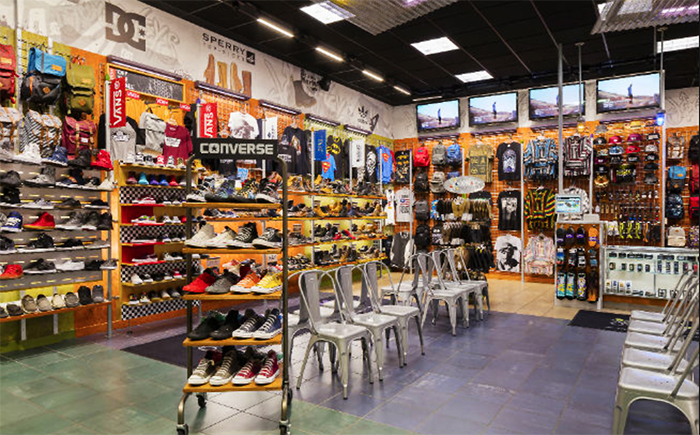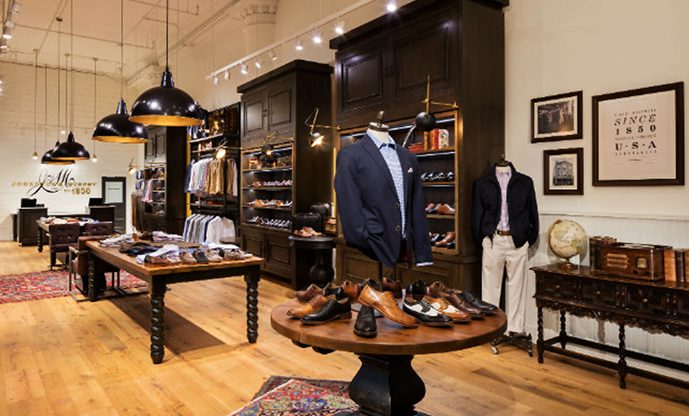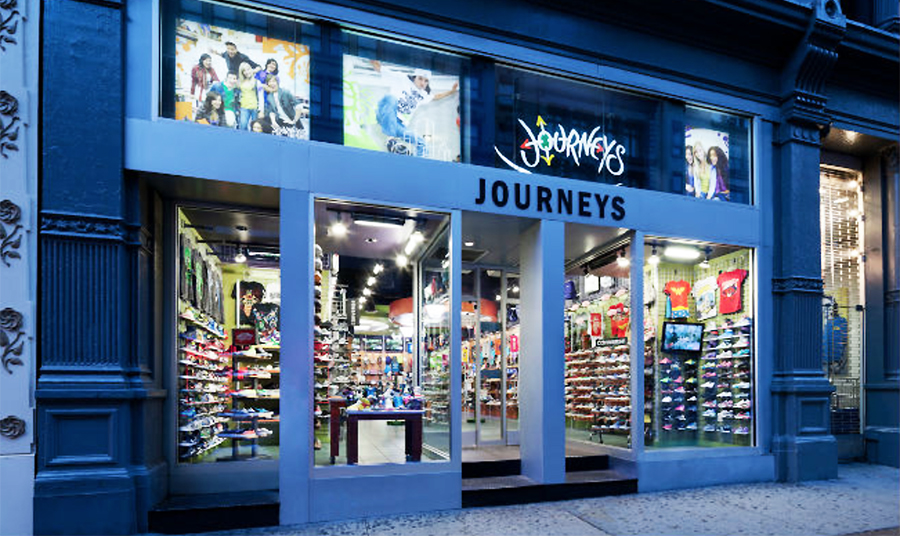According to the fourth-quarter report of its parent, Genesco Inc, Journeys reported same-store sales rose 2 percent for its first positive comp since the pandemic emerged on strong appeal for casual footwear.
“Comfort reigns as the fashion choice of the pandemic, and Journeys casual product continues to resonate strongly with consumers,” said Mimi Vaughn, Genesco’s board chair, president and CEO. “While teens always have a big compliment of fashion athletic in their closet, when fashion swings toward non-athletic, or what we call casual footwear, Journeys is especially well-positioned among its competition to deliver this assortment.”
She noted that this fall and winter, demand for boots began early, and the overall boot business for Journeys “was good.” The casual business “was even better, especially in women’s and kids,” she added.
Journeys attributed better than expected results to higher than anticipated store volume. Higher levels of customer conversion offset traffic headwinds.
Vaughn said, “Over the holidays, we were pleased by the strong appetite to shop our stores. With replenishment orders for many key styles arriving post-holiday, combined with the first wave of checks from the December stimulus program delivered early in the new year, the business accelerated as January progressed, leading to a strong finish to the quarter.”

Journeys Same-Store Sales Rise 2 Percent
Journeys Group’s same-store sales grew 2 percent in the fourth quarter, bouncing back from a decline of 6 percent in the third quarter.
Journeys’ revenues were flat at $464.7 million against $466.2 million a year ago. Sales were down 10 percent in the third quarter, 12 percent in the second quarter and 48 percent in the first quarter. Journey’s operating profit reached a quarterly record of $79.8 million, up from $55.7 million a year ago.
Companywide, sales in the quarter ended January 31 decreased 6 percent to $637 million, topping internal targets and Wall Street’s consensus estimate of $617.5 million.
The sales decrease was driven by continued pressure at Johnston & Murphy and store closures during the quarter, particularly in the UK and Canada. Stores were open about 90 percent of possible days closures. Company-wide same-store sales in stores were down 10 percent.
Digital comp growth of 55 percent was unable to offset the declines at physical stores. Digital sales increased to 27 percent of its retail revenues, up from 17 percent a year ago. The online strength was driven by strong traffic and conversion gains on mobile devices. New website visitors were up 40 percent, contributing to almost 50 percent growth in new customer purchases.
Among its other concepts, Schuh Group’s same-store sales jumped 35 percent but were down 13 percent overall due to temporary store closures. Vaugh said that like Journeys, casual assortments gained ground over fashion-athletic styles, with boots and casual strong through the quarter. Women’s led the way.
Johnston & Murphy Group’s comps were down 35 percent and down 42 percent overall. The brand continued to be impacted by the work-from-home trend and significantly fewer social gatherings during the pandemic. Casual offerings fared better, said Vaughn. She said Johnson & Murphy continues to reposition itself as a footwear-first lifestyle brand with an increasing emphasis on more casual offerings marked by the recent golf relaunch and expansion of casual offerings to include casual athletic, athleisure, rugged outdoor, and performance.

Incremental Margin Improvement Helped By Full-Price Selling At Journeys
Companywide gross margins were 45.8 percent in the quarter, down 110 basis points year-over-year. Merchandise margins were down compared to last year, although the gap narrowed for the third consecutive quarter and driven by strong full-price selling at Journeys. The gross margin decrease is due primarily to higher shipping and warehouse expense in all of its retail divisions caused by the increase in penetration of e-commerce, increased closeouts at Johnston & Murphy wholesale, higher markdowns at Johnston & Murphy retail, and the mix of its businesses, partially offset by decreased markdowns at Journeys.
As a result of decisive cost-containment actions and one-time benefits, including substantial rent abatements recognized in the quarter, expenses were down twice as much as revenue on a percentage basis. Adjusted S&A expense for the quarter this year decreased 240 basis points as a percent of sales. On a dollar basis, expenses decreased 12 percent due primarily to reduced occupancy expense, driven by rent abatement agreements with landlords and government relief programs, and reduced selling salaries, partially offset by increased marketing expenses.
Genesco’s GAAP operating income for the quarter was $62.6 million against $45.3 million a year ago. Adjusted for the excluded non-recurring items in both periods, operating income improved 9.1 percent to $64.7 million.
GAAP earnings from continuing operations were $90.0 million compared to $35.5 million last year. Adjusted to exclude non-recurring items, earnings from continuing operations were down 9.3 percent to $40.0 million, or $2.76, well ahead of Wall Street’s consensus estimate of $1.96.
Port Congestion Leading To Product Delays
Total inventory was down 20 percent on sales that were down 6 percent. Vaughn said the shortfall reflects “the disruption in the supply chain which caused delays, especially at Journeys and Schuh, where we would have liked to have received product earlier.”
Vaughn said she suspects the supply chain is “probably running about four to six weeks behind” while also conveying the delays are causing a “domino effect.” The late holiday arrivals, for instance, fueled January gains, and late spring arrivals are expected to help anticipated higher sales as tax returns arrive. She believes inventories will be better balanced in the summer.
“We feel we will manage through that,” she said. “This is a much lower volume time for our company. When we get to the high volume part of the year with back to school and with the holiday, the supply chain ought to be in much better shape.”
Regarding the first quarter, early February continued January’s positive momentum. A delay in income tax refunds led to softening in the latter part of the month, although February was in line with expectations overall. March has seen an uptick as refunds began to catch up.
For the first quarter, sizeable gains were expected against the pandemic-driven low level of sales last year. Compared to the first quarter of 2019, sales are expected to be down about 11 percent due to store closures at Schuh and continued pressure at Johnston & Murphy. Gross margins are expected to be down more than the 210 basis points due to higher shipping costs due to elevated online sales and weakness at Johnson & Murphy.
Vaughn said store traffic is also expected to continue to be affected until the vaccine rolls out fully.
She added that the new round of stimulus checks should boost sales, and Genesco is “optimistic about a greater recovery in the back half.” She added, “What we’re most excited about is we see opportunities to solidify the digital gains we’ve made and capitalize on the ongoing industry consolidation.”
Asked about emerging trends in the Q&A section of the call, Vaughn said the casual trend succeeds a retro athletic trend that had been strong for several years and supported by “just a great choice of options from all the athletic brands.” The casual shift is evident with strength in sandals in the spring and summer and acceleration in non-athletic products and boots in the third quarter, emphasizing comfort. She said, “As we look into the future, Journeys is just extraordinarily well-positioned among its competition. We’re known as the place to go for fashion footwear and casual and fashion really go together.”
Photos courtesy Journeys/Johnston & Murphy
















